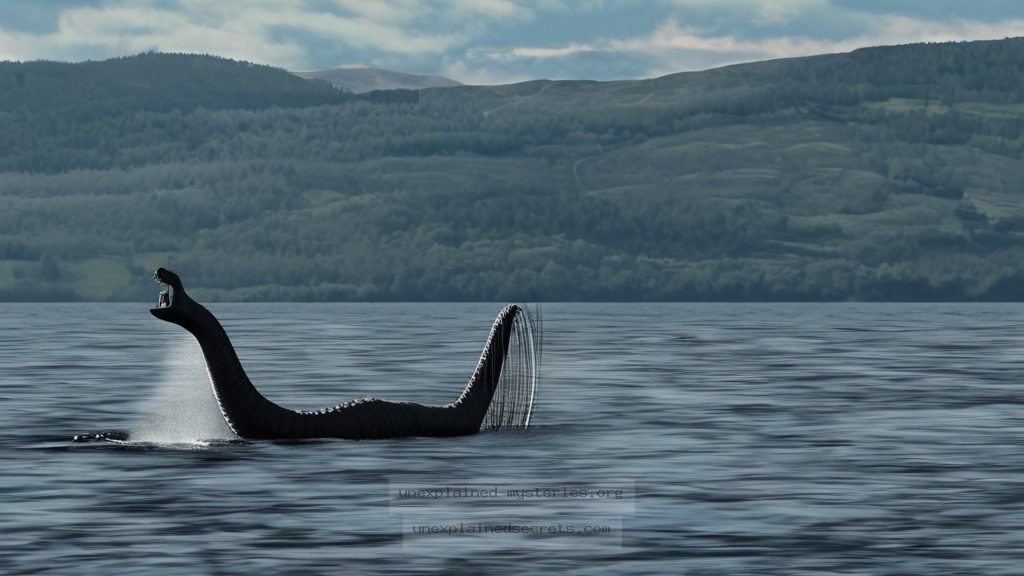What Evidence Exists for Sonar Detections of the Loch Ness Monster?
What Evidence Exists for Sonar Detections of the Loch Ness Monster?
The Loch Ness Monster, often affectionately referred to as “Nessie,” has captured the imagination of people across the globe for decades. But amidst the folklore, legends, and anecdotal sightings lies a more scientific inquiry: What evidence exists for sonar detections of this elusive creature? This question is significant not only for cryptozoologists but also for those curious about the intersection of science and folklore. Sonar technology has been employed in various expeditions to the depths of Loch Ness, and the findings—or lack thereof—offer intriguing insights into the mystery surrounding this famous lake.
Historical Context of Sonar Use in Loch Ness
Sonar technology has its roots in naval applications, primarily for detecting submarines during World War I and II. However, as the Loch Ness Monster legend grew, so did the interest in employing sonar as a means to uncover the truth behind the myths. The first significant sonar studies in Loch Ness began in the 1960s, when researchers sought to validate the existence of Nessie scientifically.
One of the earliest and most notable sonar expeditions was conducted in 1960 by a team led by the Loch Ness Investigation Bureau. They utilized a type of sonar called echo sounding, which sends out sound waves to detect objects underwater. Over the years, various expeditions have attempted to use sonar to capture evidence of the creature, leading to a plethora of claims and speculations regarding the results.
Core Concepts of Sonar Technology
Sonar, an acronym for Sound Navigation and Ranging, operates by emitting sound waves and listening for their echoes when they bounce off objects. There are two primary types of sonar: active and passive. Active sonar emits a signal and listens for the return, while passive sonar only listens for sounds made by objects in the water.
In the context of Loch Ness, active sonar has been used to scan the depths of the lake in search of anomalies that could indicate the presence of large creatures. The technology is capable of detecting objects as large as a whale, which makes it a compelling tool for investigating the Loch Ness Monster’s existence.
Documented Sonar Findings and Claims
Throughout the years, several sonar expeditions have produced intriguing results. One of the most famous was the 1987 “Operation Deepscan,” which involved a fleet of 24 boats equipped with sonar scanning the Loch simultaneously. This operation yielded a reading of a large, unidentified object approximately 700 feet long, which sparked renewed interest and speculation about Nessie’s existence.
However, while the sonar readings were compelling, they were not definitive evidence of a living creature. Subsequent analysis suggested that these readings could have been caused by schools of fish or underwater geological formations. In addition to Operation Deepscan, other expeditions have reported sonar anomalies, but these have often been met with skepticism and calls for further verification.
Comparative Analysis of Sonar Data
| Expedition Year | Technology Used | Findings | Interpretation |
|---|---|---|---|
| 1960 | Echo Sounding | Unidentified large object detected | Possibly a creature; later attributed to geological formations |
| 1987 | Active Sonar Array | 700-foot long unidentified object | Possibly a fish school; inconclusive |
| 2003 | Multi-beam sonar | No significant findings | Suggested absence of large creatures |
| 2018 | Advanced sonar and underwater cameras | Multiple anomalies detected | Further investigation needed; inconclusive |
Alternative Perspectives on Sonar Results
While sonar technology has provided fascinating insights, it is essential to consider the alternative perspectives on the findings. Skeptics argue that the sonar readings are often misinterpreted or sensationalized. They point out that Loch Ness is a deep, murky body of water, which can create false readings and mislead researchers. Additionally, some believe that the legend of the Loch Ness Monster has more to do with local culture and tourism than with any actual creature residing in the lake.
Moreover, the underwater environment of Loch Ness is complex, with varying depths and geological features that can complicate sonar readings. Many scientists advocate for a cautious interpretation of the data, emphasizing the need for rigorous validation before drawing conclusions regarding the existence of any creature.
Common Misconceptions and Clarifications
One prevalent misconception is that sonar can definitively prove the existence of the Loch Ness Monster. While sonar is a powerful tool, it is not infallible. Many factors can lead to misinterpretations, including water temperature, salinity, and even the presence of debris. Additionally, some enthusiasts may overemphasize the significance of sonar anomalies, interpreting them as evidence of Nessie’s existence without sufficient scientific validation.
Best Practices for Investigating Loch Ness
For those interested in investigating the Loch Ness Monster, there are several best practices to follow. Firstly, understanding the limitations of sonar technology is crucial. Engaging with reputable researchers and institutions that specialize in aquatic studies can provide valuable insights.
Additionally, employing a combination of technologies, such as underwater cameras and environmental DNA sampling, can yield more comprehensive results. Researchers can analyze water samples for traces of DNA from various species, offering a fresh perspective on what resides in Loch Ness.
Lastly, maintaining an open mind while adhering to scientific rigor is essential. While the mystery of Nessie is enchanting, approaching the investigation with skepticism and a critical eye will lead to more credible and meaningful findings.
Future Developments and Ongoing Research
As technology continues to advance, the possibilities for exploring Loch Ness grow exponentially. New sonar technologies, such as 3D sonar mapping and artificial intelligence-driven analysis, are being developed, offering more precise data than ever before. Furthermore, ongoing research into the ecology of the Loch, including the study of local fish populations, can provide insights into what might have contributed to the legend of Nessie.
Additionally, collaborations between cryptozoologists, marine biologists, and data scientists could lead to a more holistic approach to the mystery. By combining expertise from various fields, researchers can develop innovative methods to explore Loch Ness, from deep-sea exploration to advanced genetic analysis.
Conclusion: The Enigma Continues
The question of sonar detections related to the Loch Ness Monster remains a fascinating and complex topic. While sonar technology has provided intriguing data, conclusive evidence of Nessie’s existence is still elusive. Historical expeditions have yielded a mix of intriguing findings and skepticism, emphasizing the need for careful interpretation of sonar data.
As technology continues to evolve and researchers adopt more interdisciplinary approaches, the mystery of Loch Ness may one day be resolved. Until then, the legend of Nessie continues to thrive, inviting curiosity and sparking imaginations around the world. Whether a creature of myth or a product of cultural lore, the Loch Ness Monster remains an enduring enigma that captivates all who hear its tale. ✅
Other Articles
Recent Posts
- What Happened to Flight MH370? The Conspiracy Theories That Still Haunt Us
- What Secrets Lurk Within the Walls of the Infamous Trans-Allegheny Lunatic Asylum?
- What Evidence Supports the Existence of Bigfoot in the Pacific Northwest?
- What Happened to the Indus Valley Civilization? Unraveling the Mysteries of Ancient Urban Life
- Can Telepathy Be Scientifically Proven Through Laboratory Evidence?







